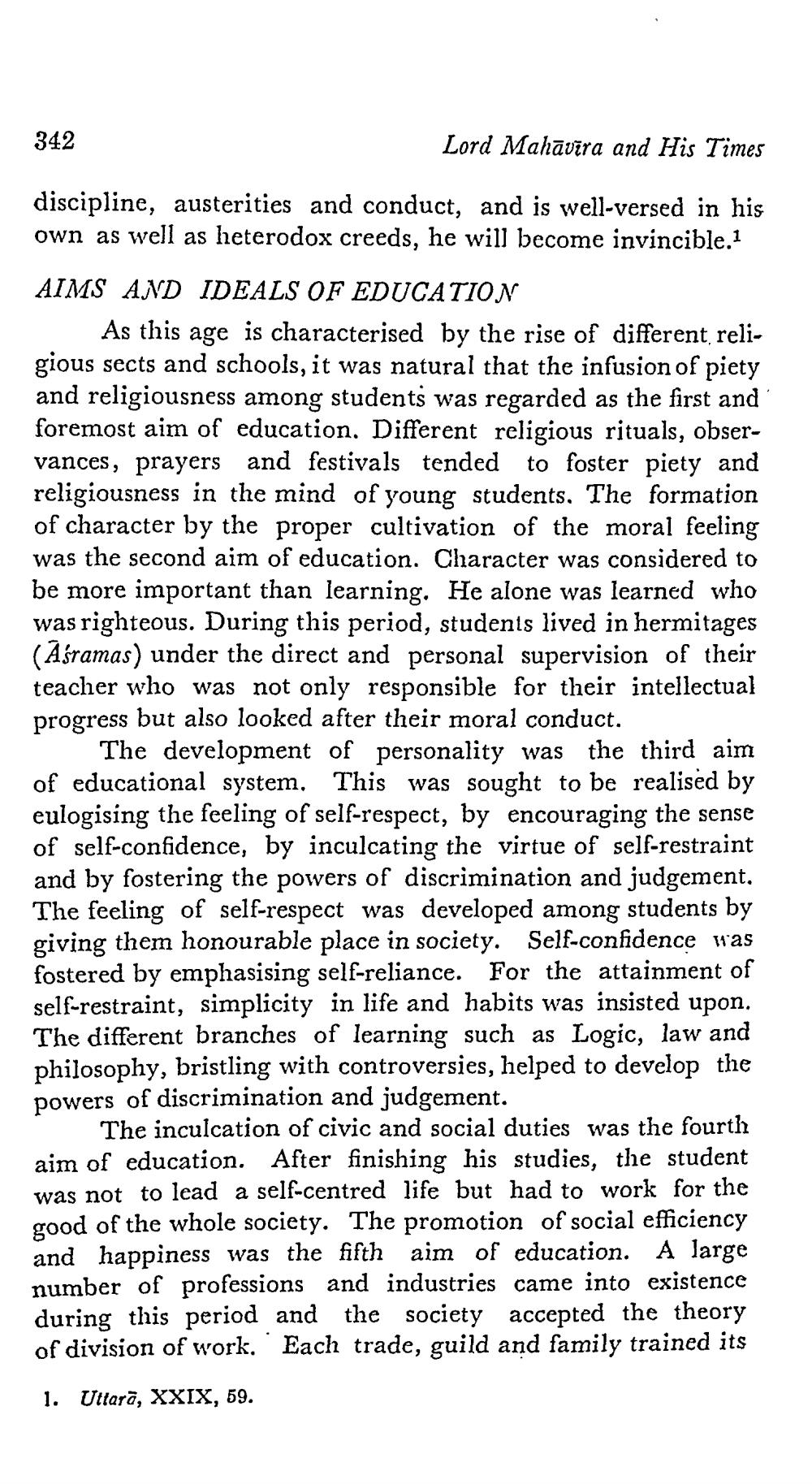________________
342
Lord Mahāvīra and His Times
discipline, austerities and conduct, and is well-versed in his own as well as heterodox creeds, he will become invincible.1
AIMS AND IDEALS OF EDUCATION
As this age is characterised by the rise of different religious sects and schools, it was natural that the infusion of piety and religiousness among students was regarded as the first and foremost aim of education. Different religious rituals, observances, prayers and festivals tended to foster piety and religiousness in the mind of young students. The formation of character by the proper cultivation of the moral feeling was the second aim of education. Character was considered to be more important than learning. He alone was learned who was righteous. During this period, students lived in hermitages (Aśramas) under the direct and personal supervision of their teacher who was not only responsible for their intellectual progress but also looked after their moral conduct.
The development of personality was the third aim of educational system. This was sought to be realised by eulogising the feeling of self-respect, by encouraging the sense of self-confidence, by inculcating the virtue of self-restraint and by fostering the powers of discrimination and judgement. The feeling of self-respect was developed among students by giving them honourable place in society. Self-confidence was fostered by emphasising self-reliance. For the attainment of self-restraint, simplicity in life and habits was insisted upon. The different branches of learning such as Logic, law and philosophy, bristling with controversies, helped to develop the powers of discrimination and judgement.
The inculcation of civic and social duties was the fourth aim of education. After finishing his studies, the student was not to lead a self-centred life but had to work for the good of the whole society. The promotion of social efficiency and happiness was the fifth aim of education. A large number of professions and industries came into existence during this period and the society accepted the theory of division of work. Each trade, guild and family trained its 1. Uttarā, XXIX, 59.




